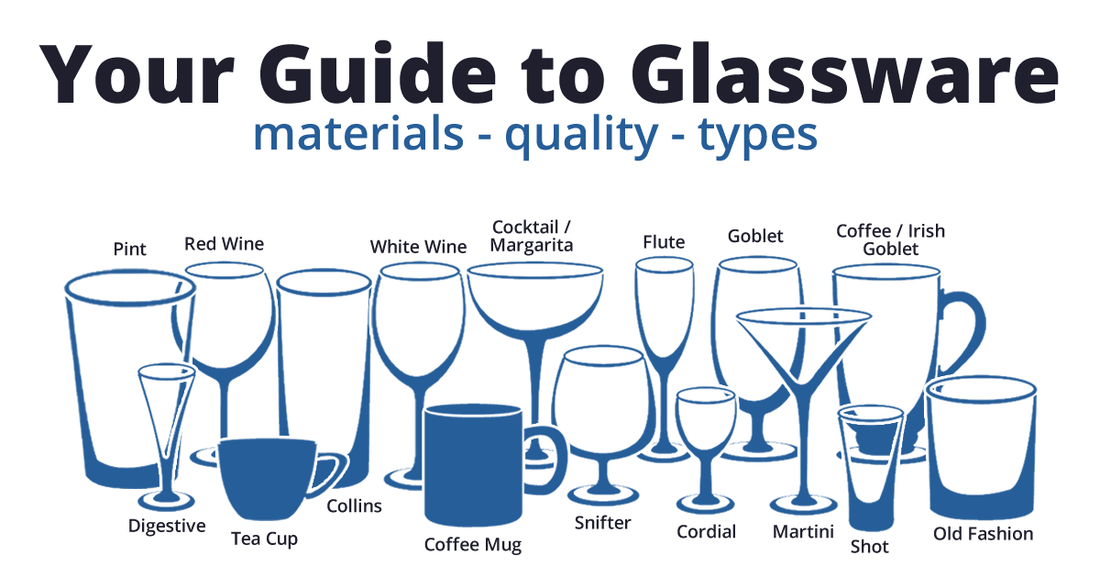
Given the delicate nature of glassware, it’s no surprise it needs replaced far more frequently than other supply. A common mistake many foodservice operations make is not ordering enough to begin with. Ordering “just enough” might seem okay at first, but constant use will cause them to wear quicker. You’ll want to have enough to keep a constant supply circulating and to account for any accidents along the way.
Helpful hint: you can never have too much of a backup supply. It is recommended to have at the very least two glasses for every seat in your dining room. However, this differs from location to location. If there’s a specific type of glass used for several different items, you might want to consider ordering up to five per seat. This helps ensure these glasses have proper cool down time after running through the dishwasher and before recirculating back into use.
There are steps that can be taken to reduce breakage and expand the life of your glassware to reduce the rate in which they will need replaced. The two most common reasons glasses break is mechanical and thermal shock.
Stacking glassware can lead to mechanical shock.
Every clank adds up: Every little bit of contact with a glass adds up, eventually leading to breakage. Some common ways this happens is by stacking glasses that shouldn’t be stacked or clanking a beer glass on the tap for show. Mechanical shock is the result of direct contact with another object, such as flatware, dinnerware or another glass. This can cause minuscule abrasions that are invisible to the eye, yet nonetheless weaken the glass. Over time it becomes more susceptible to breakage from impact or thermal shock.
Hot and then cold: After running through the dishwasher, it is important to let glassware cool before putting back into use. Thermal shock occurs when a glass experiences a sudden shift in temperature. A brand-new glass that has yet to endure any “micro-chipping” from mechanical shock is designed to handle around a 100°F temperature swing. Just a note, a high-temperature dishwashing unit reaches up to 180°F in order to properly sanitize. Coming out of the dishwasher, it’s important that glasses have time to cool. A used glass is even more vulnerable.
When a rapid change occurs suddenly, enough stress on the glass can cause it to break, or weaken it, thus making it more susceptible to breakage from future mechanical or thermal shock. The thinner the glass, the more resistant it is to thermal shock.
You can reduce the risk of thermal shock by avoiding the following:
Putting a glass that has held ice directly into the dishwasher without allowing it time to settle back to room temperature
Immediately sending a glass back into service without getting time to readjust to room temperature after it is removed from the dishwasher
Putting cold water or ice into a hot glass
You can view abrasions in the glass to determine what degree it is at risk for thermal shock by putting it over anything dark. If you see anything that looks like little white specs, the glass may be susceptible to thermal shock in the future. Each small chip is a scape point where thermal shock will separate the glass.
A few things to watch for…
Some common restaurant mishaps to avoid that can have a direct impact on the longevity of your glassware include:
Putting silverware in glasses
Banging the feet of stemware together on overhead racks
“Boqueting” or lacing too many pieces of stemware between fingers
Clanking he bowls or wine or martini glasses together
Smacking the lip of a beer glass against the tap
Boqueting glassware
…and a few tips moving forward
Order plenty of glassware. A Superior product consultant can assist with how many to order. You can also check out our glassware buying guide for more information, such as recommendations on order amounts based on foodservice and glass type, as well as best uses for different glassware styles.
Always allow plenty of time to cool after removing from the dishwasher. The same is true vice versa. Don’t immediately run a glass through a high temp dishwasher have just having used to serve a cold beverage. It’s a good practice to pre-heat a glass with hot water prior to pouring hot drinks.
A quiet kitchen is a good kitchen. The fewer clanking glasses, the longer they will last.
Do not stack non-stackable glasses, avoid “boqueting” or using glasses to hold silverware. This is common when bussing tables. Staff will often throw used flatware in the glass to free up hands when carrying back to the kitchen. Educate staff on how to properly bus tables to enhance the lifespan of your service supplies.
If you are using stackable glasses, it’s always better to lay the stack on its side instead of standing up. There is much less force put on the bottom glasses when lying horizontal.
Always, always use a plastic scoop for ice. Never use the glass itself. First, it’s better for the health of the glass, reducing the risk of mechanical shock. Second, using the glass instead of a scoop is a health code violation in many localities. Glasses could chip into the ice, creating a physical contaminant endangering patrons.
Handle glassware gently and immediately remove abraded, cracked or chipped glassware from service.
Not all glass racks are the same. The right one depends on the type of glassware you’re using. For example, stemmed glass racks are different than tumbler racks given the unique accommodations of stemware.

